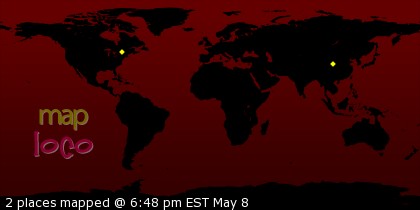
For myself, I'm fascinated by the fact that Zarmina/Gloaming/Gliese 581g doesn't rotate on its axis. It's in the same kind of orbit around its sun as our moon is to us. In the article I read, scientists have speculated that the temperate zone would be right along this horizon/twilight line. How weird/cool is that? Plus, since it doesn't rotate, I spent a good portion of the day trying to imagine weather on this world. It's going to have one hot side, one cold side, and a line of moderate temperatures, but no spin... does that mean the weather will be static? Or will there be constant storms where the two halves meet?
Of course, I'm already starting to try to figure out any religion/spiritual concepts sentient life on Zarmina/Gloaming/Gliese 581g might have. So much of our own culture is based on the fact that we have day and night, sun and moon, and other groups of two that it would be interesting to try to figure out how someone might conceptualize a worldview where there was dark, light, and in-between. And time would be quite meaningless,* since it would ALWAYS be sunrise (or sunset) and that would only change if you moved closer or further from the horizon/twilight band.
Does anyone know if it has a moon? I suspect it can't attract one without spin, but I don't really know. Do Uranus's moons roll around it, since it's rolling head over heel in space?
You can see why I don't write a lot of space SF. Although I suppose I know just enough to be dangerous, which is, in point of fact, the perfect position to write from. I may just have to set a story here, just because I've spent far too much of my waking hours trying to imagine living there already.
-----
* My friend Rachel told me via my LJ: "What I found interesting about Gliese 581g is that its year is only 36.6 days. If its orbital eccentricity is high enough, that could conceivably make up for tidal locking to produce an analog to seasons. Except they'd only be a week long or so (if there were three per orbital period)." EXTRA COOL!





3 comments:
I think the new planet does rotate, but its day is as long as its year, so the same side always faces its primary. (Kelly? Do I have this right?)
I've been trying to figure out the weather for a planet like this. There would be winds, but I don't know what kind. Would moisture get frozen and locked on the dark side? Or would there be a circulation from hot to cold and then back?
Eleanor, over on my LJ, where I originally posted some of this, my friend Frank had this to say about possible weather:
"Larry Niven uses tidally-locked worlds orbiting red dwarf suns as the home planet(s) of the Chirpsithra, the galaxy-spanning culture in his Draco Tavern short story series. He posits more-or-less constant stormage, with hot air rising over the light pole and cooling and sinking on the dark one."
That's what I was thinking. I was imaging storms in the twilight zone, with river pouring out onto the sunlit face and evaporating, vanishing into sand, and water falling as rain and snow on the dark side...
Post a Comment